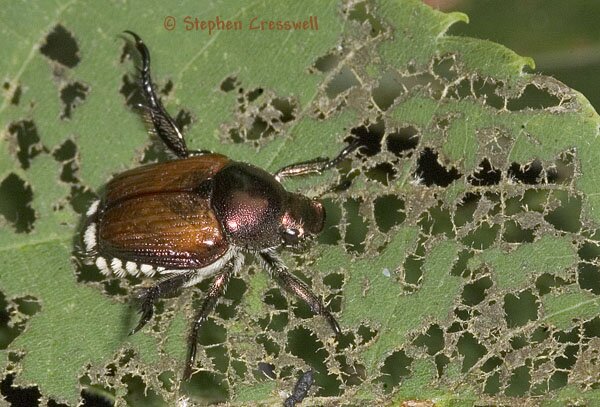
Family: Scarabaeidae
Subfamily: Rutelinae
Length: 8-12 mm
The well-known beetle Popillia japonica was accidentally introduced into the United States from Japan, probably in soil that came with bulbs or nursery stock. The first record of the species in North America came in New Jersey in 1916. Lacking very many predators on this continent, the population of Japanese Beetles grew with amazing rapidity.
Males locate females by seeking out the females sexual attractant scent (pheromone). When the males have a choice of females, research has shown that they tend to chose a large mate, and indeed larger females have more eggs, and more nutrition for the developing beetle in each egg.
After mating the female lays eggs in turf (lawns are perfect for this!) and the eggs hatch into white C-shaped grubs. Note, though, that a number of other Scarabs have grubs that look similar. The grubs feed on grass roots until cold weather drives them deeper into the soil. In the Spring the grubs resume feeding, then pupate in the ground and emerge as adults in early to mid-July. They are active as adults for the rest of the summer.
Leaf damage of the Japanese Beetle looks lacy (see photo). A patient researcher counted over 400 plants this species feeds on, but essentially this species is near-omnivorous when it comes to leaves and flowers.
Popillia japonica becomes less common as one moves west toward the Mississippi River, but unfortunately in West Virginia the Japanese Beetle is very well-established.

Insects of West Virginia